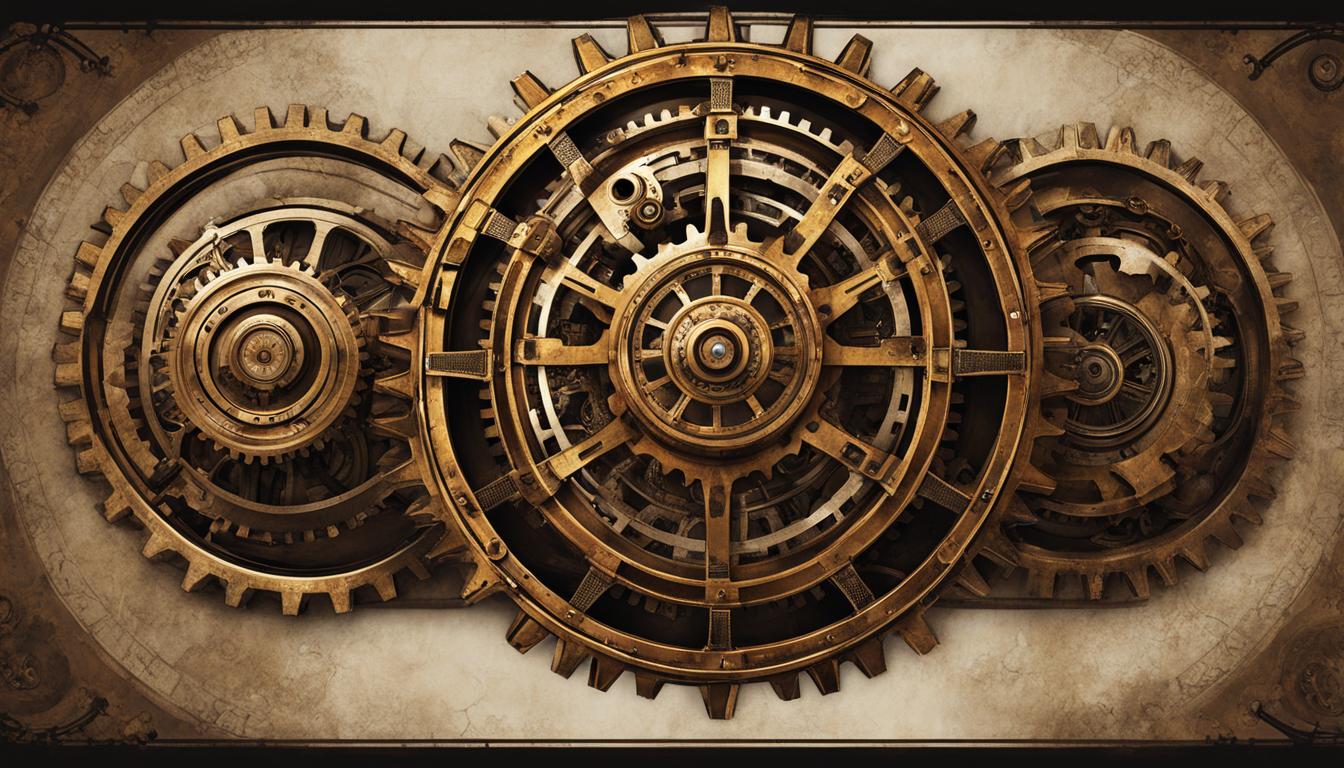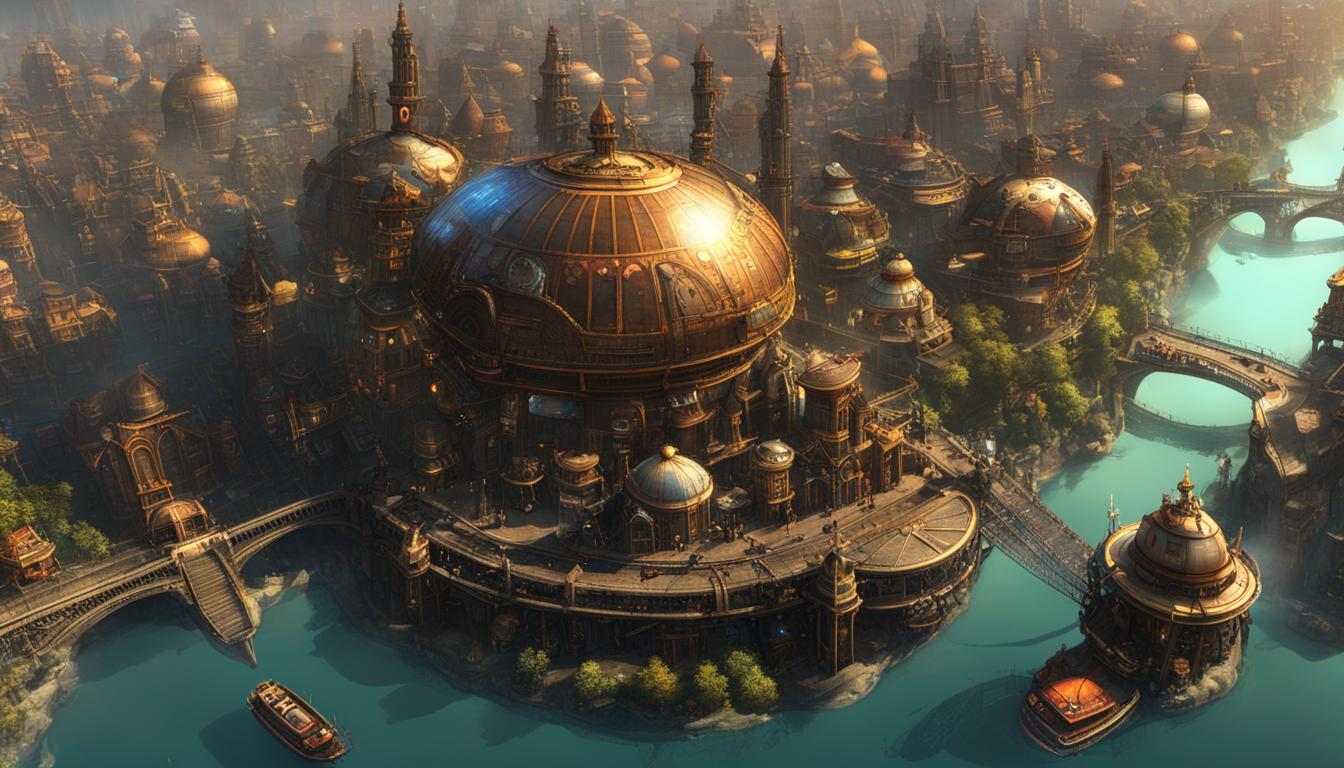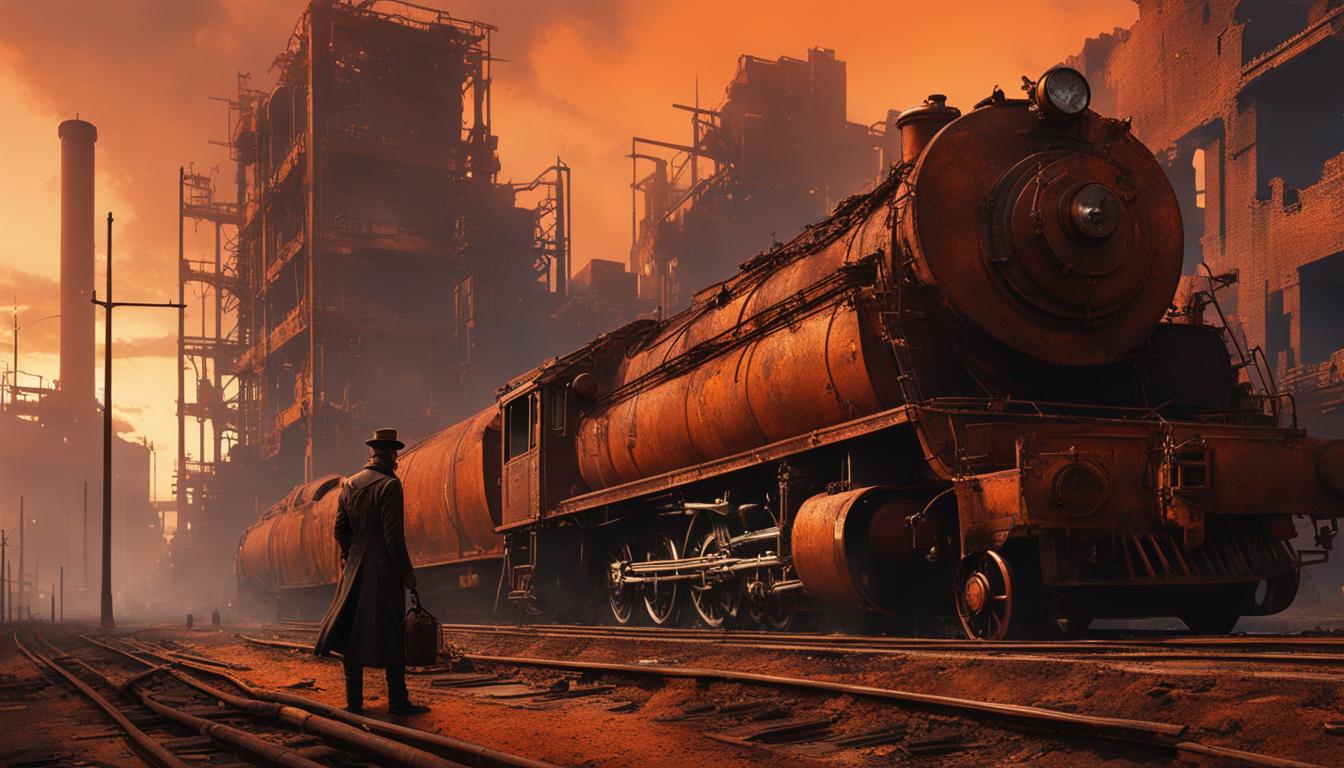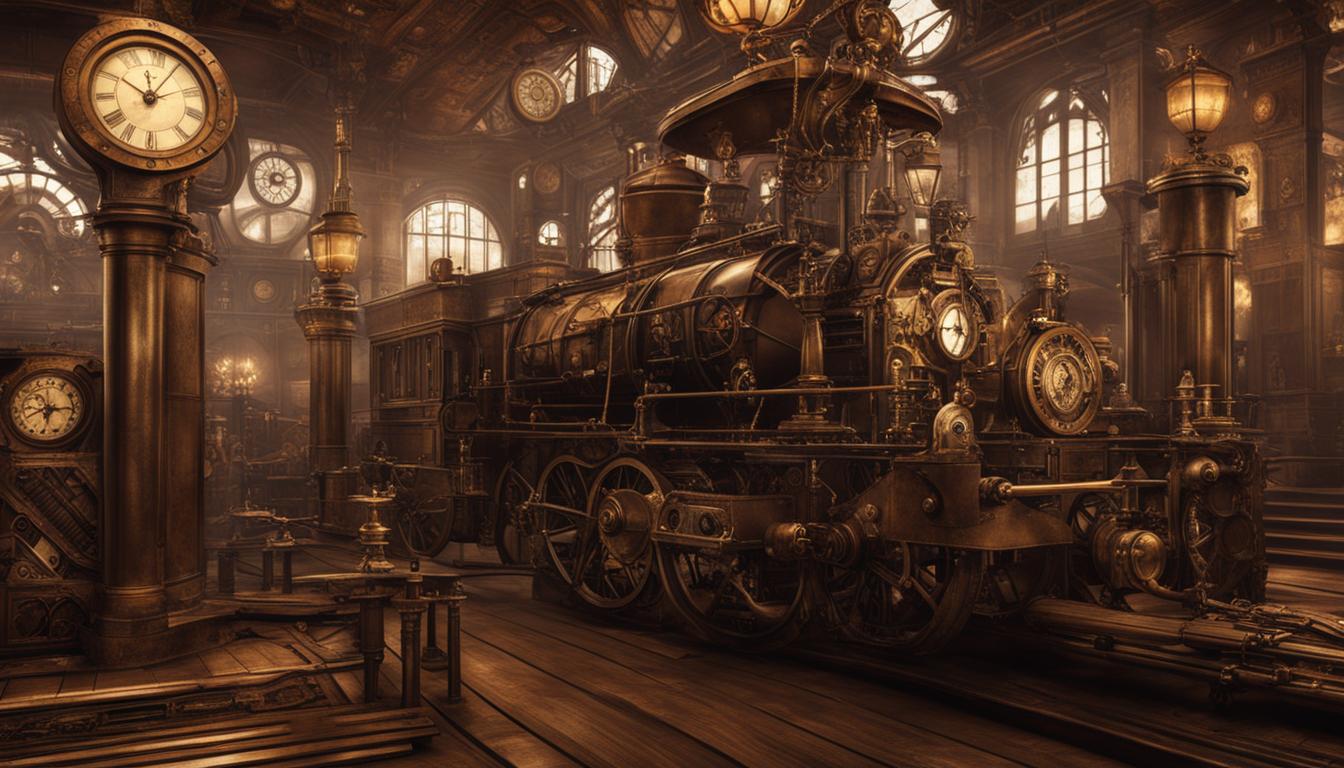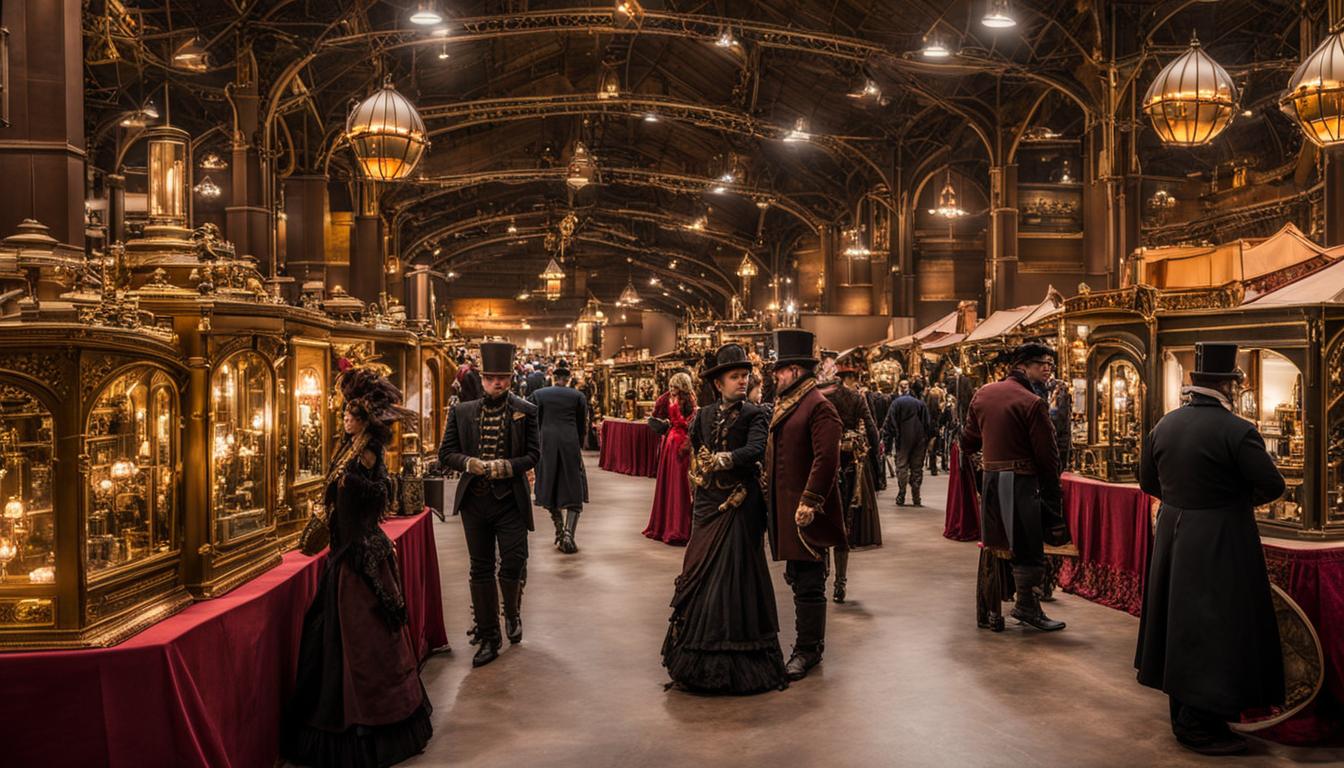Steampunk, a genre that blends science fiction, fantasy, and alternate history, transports readers to a world where steam-powered technology reigns supreme, reminiscent of a Victorian era filled with corsets, goggles, and dirigibles. However, beneath the surface of this aesthetically captivating genre lies a rich tapestry of political themes and social commentary.
Steampunk narratives offer a unique lens through which to explore and analyze politics. By examining these stories, we can unravel the intricate threads of political discourse, social critique, and power dynamics that shape the genre. From utopian idealism to dystopian warnings, steampunk invites readers to reflect on the implications of political systems and the consequences of unchecked power.
Key Takeaways:
- Steampunk narratives delve into political themes and social critique.
- They present a juxtaposition of utopian and dystopian elements, serving as allegories for real-world political and social issues.
- Steampunk stories often challenge social hierarchies and traditional power structures.
- Technology plays a significant role in shaping political landscapes within steampunk narratives.
- Decoding the politics in steampunk narratives provides insights into the genre’s social and political commentary.
The Utopian/Dystopian Discourses in Steampunk
Steampunk narratives transport readers to worlds where fantasy and technology converge, offering a unique lens through which political issues can be examined and explored. These stories often present a captivating blend of utopian and dystopian elements, showcasing both the promise and perils of steam-powered societies. With a sharp eye for political allegory, steampunk narratives delve into the complexities of power, social inequality, and the consequences of unchecked authority.
In the realm of steampunk, utopia and dystopia coexist, intertwining in intricate ways to craft political storylines that challenge societal norms. Some narratives envision a utopian vision of a steam-powered world, where technological advancements have led to societal progress and harmony. These stories highlight the potential for steam-powered technologies to revolutionize society, offering a hopeful vision of a better future.
Conversely, other steampunk narratives delve into the darker side of this technology, unveiling dystopian worlds plagued by social inequality, political corruption, and oppressive regimes. These stories draw attention to the dangers of unchecked power, using steam-powered technology as a symbol of the corrupting influence of authority and the potential for societal decay.
Through the use of rich imagery, thought-provoking metaphors, and compelling narratives, steampunk authors skillfully weave together political commentary within their tales. By immersing readers in vivid and imaginative worlds, they invite us to reflect on real-world political issues and contemplate the power dynamics that shape our societies. Steampunk’s exploration of political themes acts as a mirror, reflecting the complexities and consequences of politics in our own world.
As we delve deeper into the world of steampunk narratives, we will explore how these stories challenge social hierarchies, examine the role of technology as a political tool, and uncover the underlying political allegories that serve to captivate and provoke thought.
Table: Contrasting Utopian and Dystopian Elements in Steampunk Narratives
| Utopian Elements | Dystopian Elements |
|---|---|
| Harmonious steam-powered societies | Societal inequality and oppression |
| Technological advancements for the greater good | Political corruption and abuse of power |
| Hopeful vision of a better future | Dangers of unchecked authority |
Challenging Social Hierarchies in Steampunk Worlds
Steampunk narratives have long been recognized for their ability to challenge social hierarchies and traditional power structures. In these captivating stories, protagonists often emerge as rebels and revolutionaries, fighting against oppressive regimes and advocating for social change. By examining the politics in steampunk stories, we can uncover the genre’s exploration of political themes and its contribution to the broader discourse on power dynamics.
Exploring Themes of Resistance
One of the defining aspects of steampunk literature is its depiction of characters who resist authority and challenge the status quo. These stories often present individuals who reject the constraints of their society, whether it be through acts of civil disobedience or outright rebellion. By showcasing the power of individual agency, steampunk narratives highlight the potential for transformative change and offer a message of hope in the face of oppressive systems.
Subverting Victorian Societal Norms
Steampunk literature also provides a platform for subverting Victorian societal norms, particularly in relation to gender roles. Strong, independent female characters take center stage in these narratives, defying expectations and challenging the patriarchal structures of the time. By doing so, steampunk authors not only reflect on the politics of gender, but also invite readers to question the established power dynamics within their own lives.
The Power of Political Ideologies
Steampunk worlds often serve as microcosms for exploring different political ideologies. From anarchist factions fighting against oppressive governments to technocratic societies driven by scientific progress, these narratives offer a rich tapestry of political landscapes. Through the lens of steampunk, authors can examine the implications and consequences of various political systems, prompting readers to reflect on their own beliefs and values.
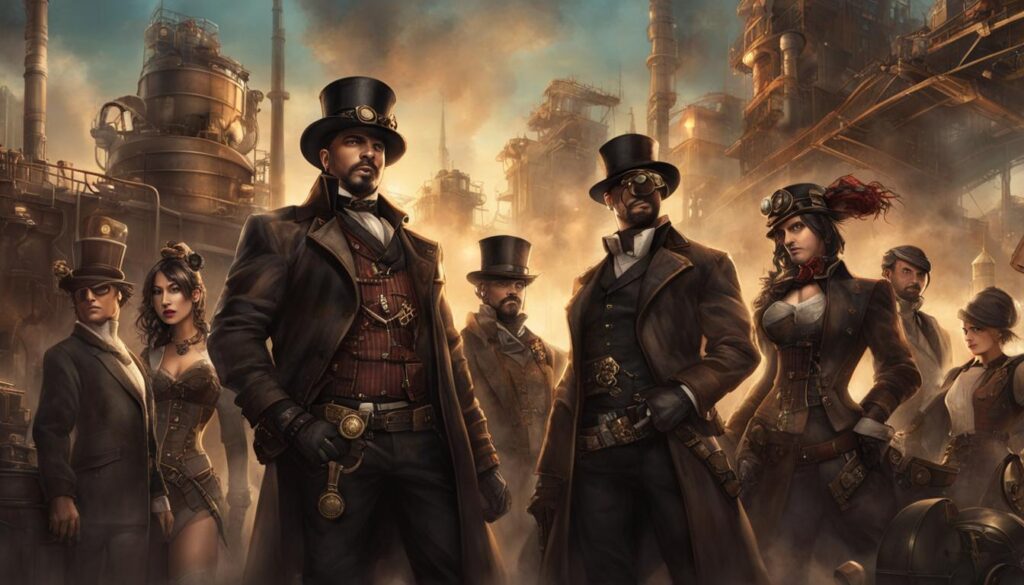
| Steampunk Novels with Political Themes | Author |
|---|---|
| The Difference Engine | William Gibson and Bruce Sterling |
| The Alchemy of Stone | Ekaterina Sedia |
| Leviathan | Scott Westerfeld |
| Perdido Street Station | China Miéville |
Steampunk literature continues to captivate readers with its thought-provoking exploration of politics and social hierarchies. Through stories of rebellion, subversion, and the power of ideologies, these narratives invite us to reflect on our own society and the potential for change. By analyzing the politics in steampunk stories, we gain a deeper understanding of the genre’s contribution to political discourse and its relevance in today’s world.
Technology as a Political Tool in Steampunk Narratives
In the steampunk genre, technology is not merely a backdrop or a means of transportation; it is a powerful political tool that shapes the very fabric of society. Steampunk narratives explore the intertwining relationship between politics and technology, offering a unique lens through which to examine the complexities of governance and power dynamics.
One of the key aspects of steampunk is the depiction of steam-powered inventions that symbolize progress and power. Airships, mechanical contraptions, and intricate clockwork mechanisms are not only visually captivating but also carry significant political implications within the narrative. These technological marvels often become contested objects, sought after by political factions, governments, and corporations, leading to power struggles and conflicts.
Through the portrayal of technology in steampunk narratives, authors provide a platform to explore real-world debates about the ethical implications of scientific advancements and the political dimensions of technology. It prompts readers to reflect on questions such as who controls access to technology, how it is used to maintain or challenge power structures, and what consequences arise from its manipulation.
Technological Advancement: A Catalyst for Political Change
“Technology is not neutral. It has the power to shape societies, to influence political landscapes, and to determine the course of history.” – Professor Amelia Hartwright
Steampunk narratives often depict technological advancements as catalysts for political change. The introduction of steam-powered innovations disrupts existing power dynamics, challenging traditional hierarchies and opening new possibilities for societal transformation. These narratives highlight the role of technological progress in shaping political landscapes and inspire readers to consider the potential consequences of both embracing and resisting such advancements.
Furthermore, the portrayal of technology as a political tool in steampunk narratives invites readers to critically examine our own relationship with technology in the real world. It prompts us to question how technological developments impact our political systems, individual freedoms, and collective futures.
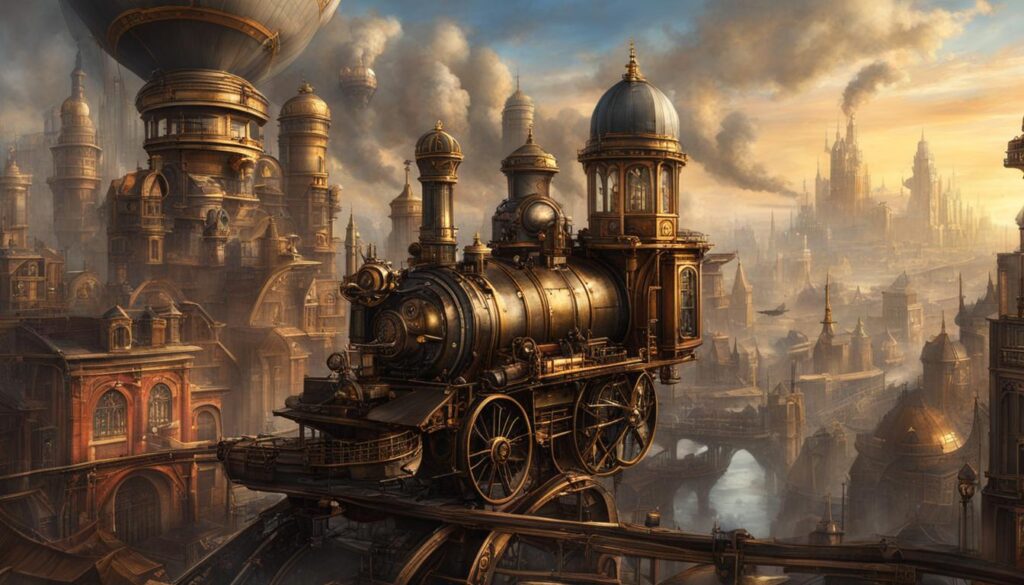

| Steampunk Technology | Political Implications |
|---|---|
| Steam-powered airships | Symbolize military dominance and geopolitical power |
| Mechanical automatons | Reflect the use of technology for surveillance and control |
| Steam-powered factories | Signify industrialization, economic growth, and wealth disparity |
As illustrated in the table above, various steampunk technologies carry distinct political implications. The airships symbolize military dominance and geopolitical power, highlighting the connection between technological advancements and national strength. Mechanical automatons serve as manifestations of the use of technology for surveillance and control, raising questions about individual privacy and government authority. Steam-powered factories represent industrialization, economic growth, and wealth disparity, shedding light on the consequences of rapid technological progress on social and political structures.
Through the exploration of technology as a political tool, steampunk narratives provide a thought-provoking platform to analyze the intricate relationship between politics and innovation. By delving into the moral and political dimensions of technology, these narratives challenge readers to consider the implications of our own technological advancements and the choices we make as a society.
Conclusion
Steampunk narratives hold more than just a fascination for airships and corsets. Within the intricate gears of this genre lies a world of political intrigue and commentary. Through the exploration of steampunk’s political storylines, readers uncover a captivating blend of utopian visions and dystopian realities.
From the depths of its alternate Victorian era, steampunk weaves tales that challenge social hierarchies and defy traditional power structures. Rebels rise against oppressive regimes, advocating for social change, while progressive female characters shatter the constraints of Victorian society. These narratives become a platform for the examination of political ideologies and the celebration of individual agency in shaping political landscapes.
Technology, with its steam-powered wonders, becomes a political tool in the hands of steampunk authors. Airships soar as symbols of progress and power, while the control of these inventions becomes a highly contested issue. Steampunk’s exploration of politics mirrors real-world debates on the ethical implications of scientific advancement and the influence of technology in governance.
By delving into the intricacies of steampunk narratives, readers gain more than a thrilling adventure; they gain insight into the genre’s political commentary. Steampunk’s political storylines and commentary on political issues offer a captivating lens through which to view and understand our own complex world.
FAQ
What is steampunk?
Steampunk is a genre that combines elements of science fiction, fantasy, and alternate history, often set in a Victorian-like world powered by steam.
What are the political themes in steampunk narratives?
Steampunk narratives delve into the realm of politics, exploring themes such as social critique, commentary on power dynamics, and the implications of political systems.
How do steampunk narratives present utopian and dystopian elements?
Some steampunk stories envision worlds with societal advancements and utopian ideals, while others highlight issues such as social inequality, political corruption, and the dangers of unchecked power.
How do characters in steampunk narratives challenge social hierarchies?
Protagonists in steampunk stories are often rebels and revolutionaries, fighting against oppressive regimes and advocating for social change. Strong, independent female characters also subvert Victorian societal norms and gender roles.
How does technology shape political landscapes in steampunk narratives?
Steam-powered inventions in steampunk narratives symbolize progress and power, and the control and distribution of these technologies become contested issues. The portrayal of technology reflects real-world debates about scientific advancements and the role of technology in governance.
Why is politics important in steampunk narratives?
Politics is a crucial aspect of the steampunk genre, allowing authors to explore political themes, challenge social hierarchies, and comment on real-world political issues through an alternate, steam-powered Victorian era lens.

